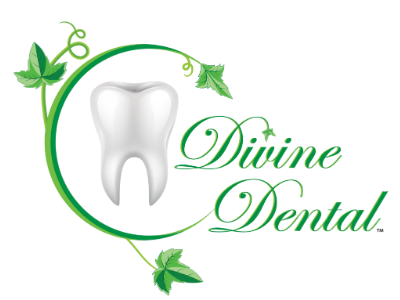Understanding The Different Types Of Dental Bridges And Their Benefits
Are you missing one or more teeth and looking for a solution that can restore your smile and improve your oral health? Dental bridges might be the answer you've been searching for. But with different types of bridges available, how do you know which one is right for you?
Maintaining good oral health is crucial for overall well-being, and missing teeth can have a significant impact on both your appearance and dental functionality. Dental bridges have become a popular choice for replacing missing teeth, offering numerous benefits to patients. However, it's important to understand the different types of dental bridges to make an informed decision.
What is a Dental Bridge?
A dental bridge is a dental restoration that is used to replace one or more missing teeth. It consists of a false tooth, known as a pontic, which is fused between two dental crowns. The crowns, also called abutment teeth, act as anchors to provide support and stability for the bridge.
Dental bridges are a popular option for tooth replacement because they offer several benefits. First and foremost, they restore the functionality of the mouth. Missing teeth can make chewing and speaking difficult, but a dental bridge can help alleviate these issues.
In addition to restoring functionality, dental bridges also improve the aesthetic appearance of the smile. They fill in gaps left by missing teeth, giving a more complete and natural look to the mouth. This can greatly enhance a person's confidence and self-esteem.
Furthermore, dental bridges help maintain proper oral hygiene. When a tooth is missing, the surrounding teeth may shift into the empty space, causing alignment problems. Bridges prevent this shifting, reducing the risk of gum disease and other oral health issues.
Overall, dental bridges are an effective and reliable dental restoration for replacing missing teeth. They provide a natural-looking solution that restores both the appearance and functionality of the mouth.

Traditional Bridge
A traditional bridge is a common type of dental restoration used to replace missing teeth. It consists of a false tooth, also known as a pontic, that is held in place by dental crowns, which are placed on the adjacent healthy teeth known as abutment teeth.
The purpose of a traditional bridge is to fill in the gap left by a missing tooth and restore both functionality and aesthetic appearance. This type of bridge is constructed by first preparing the abutment teeth. A small portion of the enamel is removed to make room for the dental crowns. Impressions of the teeth are then taken to create a custom-fit bridge.
The false tooth is made to match the color, shape, and size of the natural teeth, providing a seamless integration. The dental crowns and bridge are then placed over the prepared abutment teeth and the false tooth is anchored between them.
Dental crowns play a crucial role in supporting the false tooth and providing stability to the traditional bridge. They not only hold the bridge in place but also help distribute the forces during chewing and speaking. Additionally, the crowns help prevent the adjacent teeth from shifting and maintain the alignment of the bite.
Overall, a traditional bridge, with its use of abutment teeth and dental crowns, offers a conservative and effective solution for replacing missing teeth, restoring both function and aesthetics to the smile.
Implant-Supported Bridge
An implant-supported bridge is a type of dental bridge that is supported by dental implants rather than relying on adjacent natural teeth for support. This innovative treatment option offers several benefits for individuals who have multiple missing teeth or have lost all their teeth.
Unlike traditional bridges that require the preparation of adjacent healthy teeth, implant-supported bridges do not place any additional strain on the natural teeth. Instead, dental implants are surgically placed into the jawbone to act as anchors for the bridge. This not only provides more stability and support to the bridge but also helps to maintain the oral health of the remaining natural teeth.
The procedure for getting an implant-supported bridge involves multiple steps. After a thorough examination and planning process, dental implants are placed into the jawbone. These implants serve as artificial tooth roots and provide a strong foundation for the bridge. The implants are allowed to fuse with the jawbone through a process called osseointegration, which ensures their stability and longevity.
Once the implants have fully integrated with the jawbone, abutments are attached to the implants. These abutments serve as connectors between the implants and the bridge. The bridge, consisting of one or more artificial teeth, is then securely attached to the abutments, restoring both functionality and aesthetic appearance.
Implant-supported bridges are typically made from high-quality materials such as porcelain, which closely mimics the appearance of natural teeth. They are designed to be durable, long-lasting, and easy to maintain with regular oral hygiene practices.
Overall, implant-supported bridges offer a conservative and reliable solution for replacing missing teeth while preserving the health of the remaining natural teeth. It improves chewing ability, restores speech, and enhances confidence in smiling. Consultation with a dental professional is essential to determine if implant-supported bridges are suitable for individual dental needs.

Resin-Bonded or Maryland Bridge
A resin-bonded bridge, also known as a Maryland bridge, is a conservative alternative to traditional bridges. This type of bridge is commonly used for patients with missing teeth in the front of the mouth.
One of the key features of a resin-bonded bridge is the use of metal wings that are bonded to the adjacent teeth. These metal wings, typically made of precious or non-precious metals, provide stability and support to the bridge without extensive preparation of the natural teeth. The metal wings are carefully bonded to the backside of the adjacent teeth, allowing the bridge to be securely held in place.
Resin-bonded bridges offer several benefits. Firstly, they are a less invasive option compared to traditional bridges, as they require minimal modification of the adjacent teeth. This means that the natural tooth structure is preserved, reducing the risk of sensitivity or damage to the teeth. Additionally, resin-bonded bridges are a more conservative and cost-effective option for patients with missing teeth in the front of the mouth.
It is important to note that resin-bonded bridges may not be suitable for all patients or all areas of the mouth. Your dentist will evaluate your specific case and determine if a resin-bonded bridge is the right treatment option for you. Proper oral hygiene practices, including regular brushing and flossing, along with regular dental check-ups, are essential for maintaining the longevity and functionality of a resin-bonded bridge.
Cantilever Bridge
A cantilever bridge is a type of dental bridge that is designed to replace a missing tooth by using adjacent teeth for support. Unlike traditional bridges that rely on abutment teeth on both sides of the gap, a cantilever bridge only requires one adjacent tooth for support. This makes it a suitable option when there is only one healthy tooth adjacent to the gap.
The design of a cantilever bridge involves a false tooth, called a pontic, that is anchored to an adjacent natural tooth using a dental crown. The dental crown is placed over the adjacent tooth, and the pontic is fused to it, creating a stable and functional restoration.
One of the main benefits of a cantilever bridge is that it can preserve healthy adjacent teeth. Unlike other types of bridges that require the preparation of both neighboring teeth, a cantilever bridge only involves the preparation of one adjacent tooth. This means that the healthy tooth structure of the neighboring tooth is conserved, reducing the risk of damage or sensitivity.
Additionally, a cantilever bridge offers a conservative alternative for patients with tooth loss. It provides a fixed and durable dental restoration, restoring both the appearance and function of the missing tooth. By filling the gap, a cantilever bridge helps to prevent issues such as shifting of adjacent teeth, improper bite, and jawbone deterioration.
Oral Health Considerations Before Getting A Dental Bridge
Before getting a dental bridge, there are several important oral health considerations to address. Firstly, it is crucial to have a thorough examination by a dentist to assess the overall health of your teeth and gums. This is important because any underlying dental issues, such as tooth decay or gum disease, should be treated prior to the placement of a dental bridge.
Maintaining healthy teeth and gums is essential for the success and longevity of a dental bridge. Healthy adjacent teeth play a key role in supporting the bridge and ensuring its stability. It is important to practice proper oral hygiene by brushing twice a day, flossing daily, and using an antimicrobial mouthwash to keep the teeth and gums clean and free from bacteria.
Regular checkups with your dentist are also vital to monitor the health of your teeth and gums. Dentists can detect early signs of decay or gum disease and provide necessary treatment to prevent any complications that may affect the longevity of the dental bridge.
Certain conditions or issues can affect the success of a dental bridge. These include bruxism (teeth grinding), which can put excessive pressure on the bridge, leading to damage. Additionally, poor oral hygiene can result in the accumulation of plaque and bacteria, increasing the risk of decay and gum disease around the bridge.

Conclusion
In conclusion, dental bridges offer a multitude of benefits for both oral health and appearance. By replacing missing teeth, dental bridges help restore proper oral function and prevent issues such as shifting of adjacent teeth and difficulty in chewing. They also contribute to a confident smile, improving self-esteem and overall well-being. However, it is crucial to maintain good oral hygiene practices and attend regular dental checkups to ensure the longevity and success of the dental bridge. With proper care, dental bridges can provide a long-lasting and effective solution for restoring missing teeth and enhancing the aesthetics of a smile.




